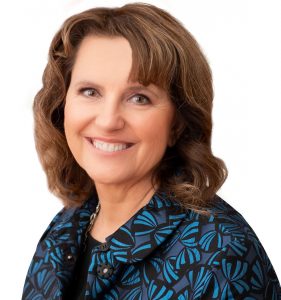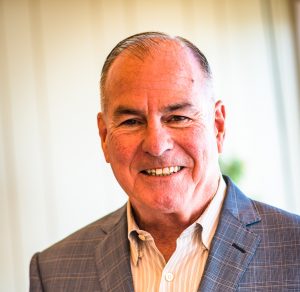The New Race for Relevance: 5 Radical Changes for Associations

Mary Byers, CAE, CSP and Harrison Coerver are the authors of Race for Relevance, 5 Radical Changes for Associations. Based on more than 60 years combined experience working with more than 1,500 organizations and updated for the 10th anniversary, the authors examine the realities of today’s marketplace—including the impact of the COVID pandemic—and what it will take for associations to prosper tomorrow. In this article, they present five areas where the association model is ripe for change.
Significant and irreversible changes in the environment for associations have occurred over the last several decades—many of which have been accelerated due to the COVID-19 pandemic. Major environmental changes require commensurate organizational changes. The modest, incremental adjustments that most associations are making in response are inadequate. Radical changes in the association model are in order if associations are to maintain their relevance and, for some, their existence. We tackle all of this and more in the revised 10th anniversary edition of our book Race for Relevance: 5 Radical Changes for Associations, excerpted below.
The traditional association model once worked well, but it no longer fits today’s conditions and circumstances. Following are five major flaws that have materialized in the model.
1. Associations boards aren’t competency-based and recruitment isn’t often intentional enough.
Selecting directors based on where they live, who they represent, who they know or how long they’ve been around is obsolete. Associations will be well served by small boards (5 directors will do) carefully selected for proven governing skill and competencies that match the organization’s opportunities or challenges. If you don’t think a 5-member board is feasible, consider that most associations are actually governed by their executive committees today—and that the Million Dollar Round Table is governed by an executive committee of five (and doesn’t even have a board!). In today’s environment, associations need a robust, transparent method of identifying, recruiting and onboarding board members.
2. Association staffs are suboptimized.
While kinder and simpler times allowed this, today a successful association cannot afford to suboptimize its human capital. Squandering valuable time in the “care and feeding” of volunteer leadership and energy devoted to mitigating micromanaging directors is no longer acceptable. Well-intentioned but unproductive committees don’t make the best use of the association’s human capital. The typical association governance structure is an impediment to performance versus an asset and is costly in terms of time and money. A fully empowered CEO and staff are essential to future success.
3. All member markets are dynamic, and over time most have undergone significant change—without corresponding changes at the association.
In some instances, markets are rapidly transformed (witness the impact of COVID-19 on entertainment and transportation). Many associations are struggling to serve member markets that are vastly different from those they were initially designed to serve. Kind of like a food distributor still structured to supply the corner grocery store in an era of hyper markets. Industry consolidation and professional specialization trends require a rigorous rethinking of the member market the association can competitively serve.
4. Associations have a propensity to add new programs, services, products and activities—without abandoning underperformers or those no longer relevant.
The underlying assumption is that volume equals value. The more we offer the more value for the member. Chief elected officers add their contribution during their term. Committees spend hours conjuring up new ideas for member benefits. Staffs build their résumés with expanded offerings they developed. The result: a growing product and service line that is uncompetitive, lacks fit, and is increasingly difficult to manage and communicate. The successful association of the future will focus on a narrow product line, concentrating their resources for improved performance and competitive position.
5. Associations have been swamped by a tidal wave of technology.
Associations’ relevance is clearly at risk if they cannot quickly bridge the technology gap they have allowed. They must develop a “digital first” mindset and invest adequate resources in new technology. An important first step is an analysis of the association’s “technology spend” and developing an approach to quickly shift resources to technologies that will add value and improve program and service delivery. It is not an option. It is an imperative. Ignoring technology is a short cut to irrelevance.
Will making radical changes be easy? Absolutely not. But change is necessary due to an increasingly competitive environment and the ravages of COVID-19. Associations are tradition-bound and risk averse, making change particularly challenging. But there are examples of each of the above changes that have been achieved by associations and there are methods and strategies that can be employed to make it happen.
Hear more from Mary Byers in this OnPAR video short as she shares the characteristics of high performing sales teams during the pandemic and beyond.


Mary Byers, CAE, CSP, Consultant and Professional Speaker.
Mary Byers, CAE, CSP,a former association executive, is a consultant and professional speaker. She facilitates retreats and generative discussions, encourages innovation initiatives, helps association staff and volunteers talk through tough issues, and coaches CEOs and board chairs. She is known for her energy, enthusiasm and ability to ask thought-provoking questions designed to challenge meeting participants. Learn more about Mary at MaryByers.com
Harrison Coerver, President of Harrison Coerver & Associates
Harrison Coerver is President of Harrison Coerver & Associates, a management consulting firm specializing in trade associations, professional societies and other tax-exempt membership organizations. Since 1985 Harrison has consulted with over 1,000 associations in strategy, planning, marketing and management. He is known for his group facilitation skills, straightforward style and innovative approaches to association governance and management. Learn more about Harrison at HarrisonCoerver.com
